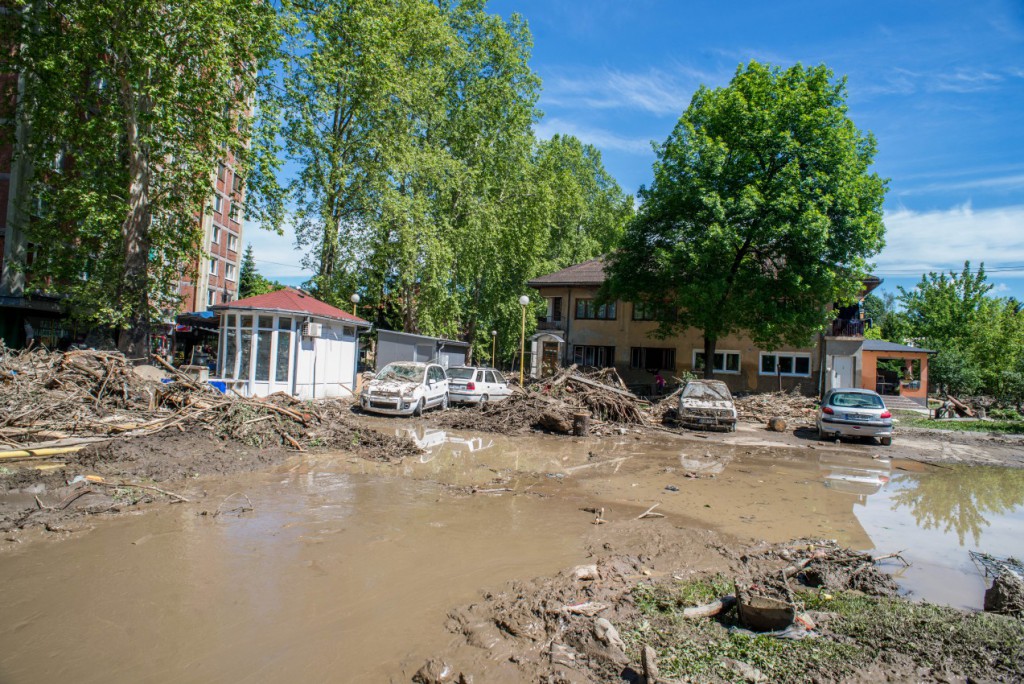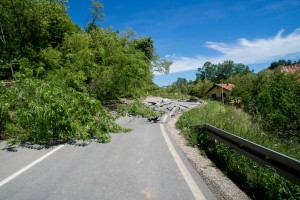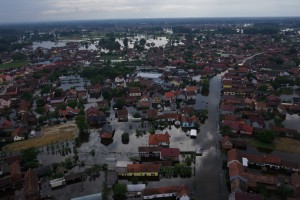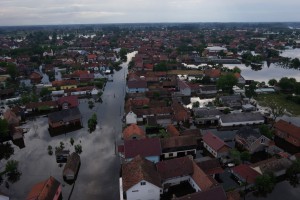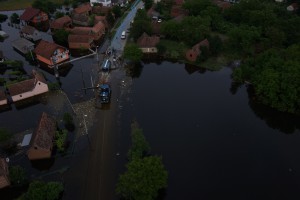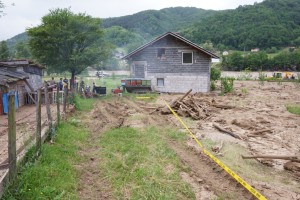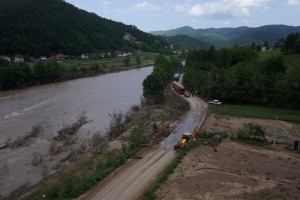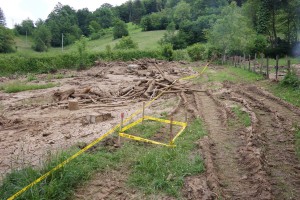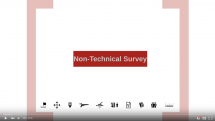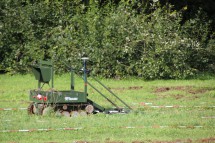TIRAMISU and ICARUS partners deployed to flood hit areas in the Balkans
Bosnia-Herzegovina and Serbia, as well as parts of Croatia, have been hit by the worst flooding on record following torrential downpours over the last few weeks. The Belgian First Aid and Support Team (B-FAST), one of the ICARUS project partners, has been deployed to Bosnia-Herzegovina to assist with relief operations. As part of the EU Civil Protection mechanism, along with the B-FAST team the Belgian Royal Military Academy (RMA), coordinator of the ICARUS project, has posted an expert in robotics accompanied by an Unmanned Aerial System (UAS) in the flood-affected area. RMA researcher Haris Balta, will utilise the Microdrone MD4-1000 quadrotor-type UAV to assist the relief team in carrying out tasks such as damage assessment, dyke breach detection, mapping and aerial inspection. He will also assist a team from the Bosnia and Herzegovina Mine Action Centre (BHMAC) in detecting the locations of Explosive Remnants of War (ERWs), that have been displaced as a result of landslides caused by the floods. So far, the disaster has claimed forty-four lives according to media reports and it is estimated that over 3 million people in both Bosnia-Herzegovina and Serbia are directly or indirectly affected by the crisis.
The prevalence of ERWs in the affected regions presents a serious threat to the safety of the local population and relief workers. The relief mission has been organised in the framework of the European research projects ICARUS (developing robotic capabilities for Search and Rescue) and TIRAMISU (Humanitarian Demining), both of which are coordinated by RMA. In addition, the Vrije Universiteit Brussel (VUB) is assisting the B-FAST and BHMAC teams by providing up-to-date satellite imagery of the flooded regions, showing mine-presence indicators. The participation of VUB is taking place in the context of the SAFEDEM project, which is funded by the European Space Agency.
Report from the ground
The entire northern and central-northern regions of the country have been severely affected. Though the weather has now improved, there are increasing concerns over the potential spread of diseases such as typhoid and hepatitis. Many livestock drowned in the floods, leaving the water contaminated with dangerous bacteria and giving rise to fears of an epidemic. One of the highest priorities is therefore to ensure that people living in these areas have access to clean drinking water.
One of the main issues hampering rescue efforts is the inability to reach certain areas, as many routes are blocked because of the landslides caused by the flooding.
During this operation, the UAS is being used for mapping the area and searching for ERWs to support the work of the Bosnian and Herzegovina Mine Action Center (BHMAC)
The city of Orasje where B-FAST has been deployed is still flooded, as shown by these images taken by the ICARUS UAS on the 27th of May.
The picture below shows an aerial view of the water pumps installed by B-FAST. The UAS proved very useful in rapidly detecting dyke breaches and mapping the area.
During operations, the UAS was used to support BHMAC to map areas where ERWs had been displaced due to the landslides.
An anti-personnel mine was found washed up after the floods.
In order to inform the rescue workers about the dangers of ERWs, a mine risk education session was organised by BHMAC for B-FAST and the German, Austrian and Baltic rescue teams. Dummy ERWs were presented in an effort to ensure members of the rescue team could recognise them, and to ensure they were fully aware of the associated risks.

